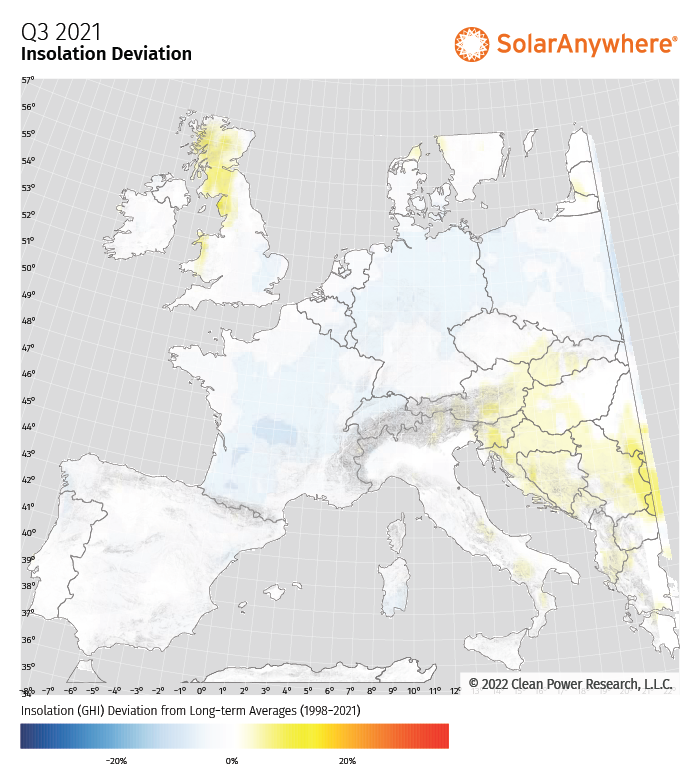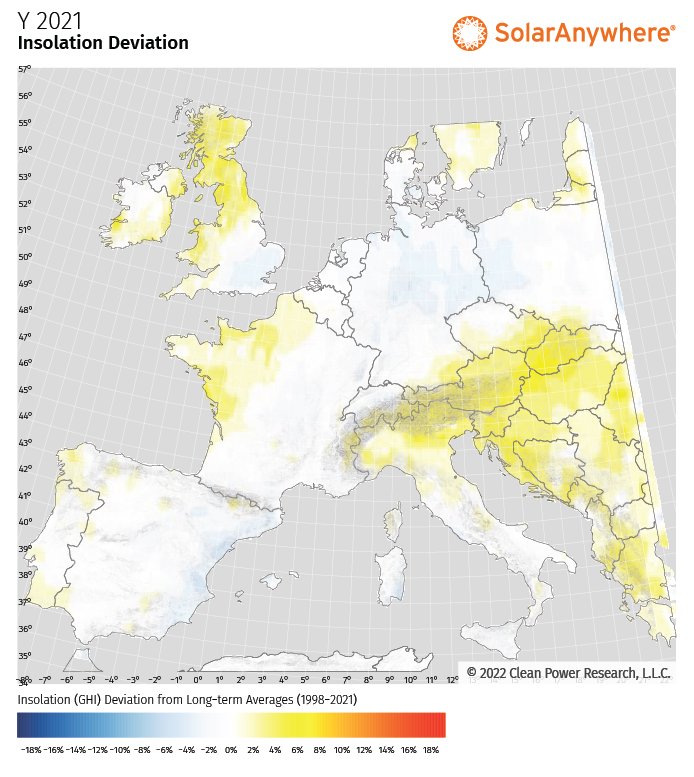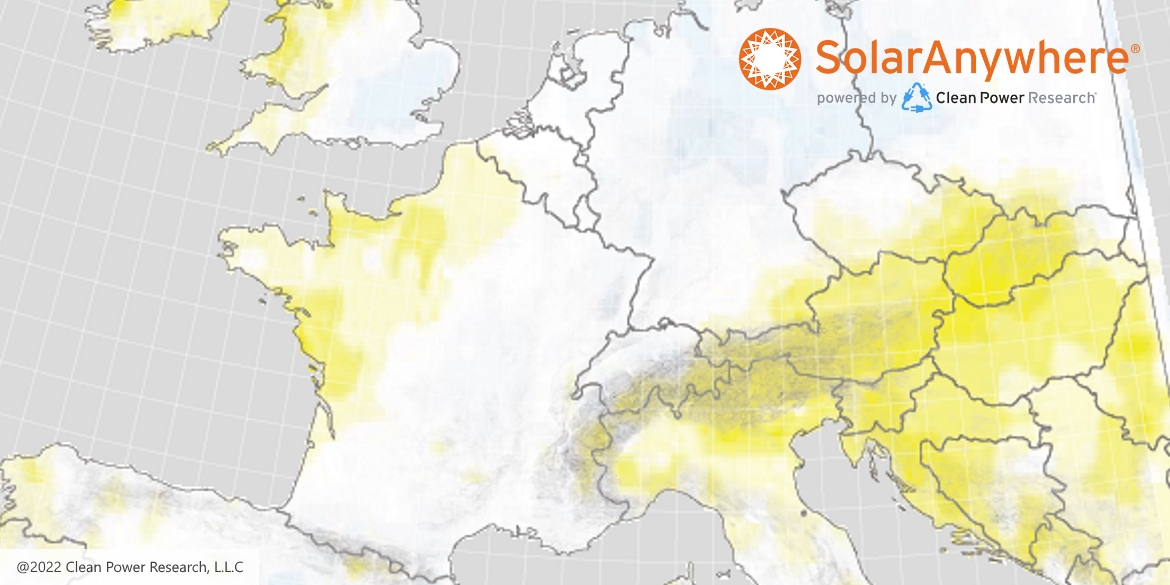In 2021, Europe experienced the hottest summer on record, at 1.0°C (1.8°F) above average. This included an all-time peak temperature of 48.8°C (119.8°F) measured in Sicily in early August, surpassing the prior record of 48°C (118.4°F) set in 1977 in Greece. Also in 2021, record temperatures were met with extreme flooding events in Central Europe and fire events in Southeastern Europe.
These extreme weather events brought an unprecedented set of challenges for the population. They also brought complexity for energy asset developers and managers in parts of the region, who struggled to manage the impacts of temperature, wildfire smoke or flooding to their asset operations. When dealing with such extraordinary weather complexity, it’s more important than ever for solar asset stakeholders to invest in quality weather data sources to ensure they have a comprehensive understanding of their assets.
2021: Record solar energy production in Europe
It was also a record year for solar production in Europe. For the first time, in the EU27, solar supplied more than 10% of the energy generated in the peak June and July months. Solar generation records were set in eight European countries, including Germany and Spain. This is a testament to the commitments of communities, developers, policymakers and investors to significantly increase solar PV installations to enable these higher levels of energy generation.
Hot and dry conditions yielded extreme fire risk in various areas of Southern Europe. By the end of 2021, it was one of the most severe fire seasons in the region since 1991, destroying more than 800,000 hectares across the Mediterranean. This was most notable with a peak in fire-based emissions in August of 2021, principally from Greece and Turkey.
Focusing on insolation (GHI) deviations, June 2021 went through unusually high positive deviations (vs. long-term averages over the June 1998-2021 reference period). Notably, deviations were 20-30% across Central and Eastern Europe, compared to a moderate +/-5% deviation for the remainder of Europe.
We noted before that decreasing air pollution since 2000 across the Eastern U.S. and Europe has led to higher annual clear sky irradiance across these regions. Will that trend reverse with increased wildfire risk, and the potential to bring gigawatts of coal-fired generation back in Europe to minimize gas dependency?
Figure 1: Q3 2021 Insolation Deviation in Europe

As shown in Figure 1, the Q3 2021 insolation (GHI) deviations are interesting in parts of the region, as they capture the months of July and August. Note the insolation deviations in the wildfire regions across the Mediterranean.
Figure 2: Full-Year 2021 Insolation Deviation in Europe

Looking across the full year 2021 insolation (GHI) deviation, deviations were at moderate levels (see Figure 2). We note slightly negative deviations in Catalonia, Spain and central Germany at up to -5%, and slightly positive deviations in Scotland and Central/Southeastern Europe in the 5-8% range. These moderate deviations would also be reflected in similarly moderate deviations on solar generation, across the region.
How 2021 extreme weather events across Europe impacted solar PV production
Spanning Europe, the Mediterranean endured a severe heatwave in July through part of August, with record temperatures hitting Italy, Greece and Spain. Excessive heat negatively impacted solar photovoltaic production in these regions.
July brought high-impact rainfall to western Central Europe, with soils close to saturation points, leading to severe floods most notably in Germany, Belgium and the Netherlands. Wildfires emerged across Southern Europe towards the end of the summer, adding to soiling losses on solar photovoltaic facilities.
Summer season extreme weather events defined a tumultuous year across the region. As we reach the midpoint of 2022, we are mindful of the extraordinary need for reliable, secure and cost-effective local energy in Europe. More than ever, renewable energy stakeholders must rigorously assess local weather conditions to successfully develop, finance and operate solar facilities across Europe. To that end, we encourage stakeholders to contact us to learn about SolarAnywhere as an additional, high-quality dataset to reinforce your existing analytical toolkit.
Learn More!
Watch the on-demand webinar: Quantifying Impacts and Risks of Wildfires and Extreme Weather with Improved Performance Benchmarking

